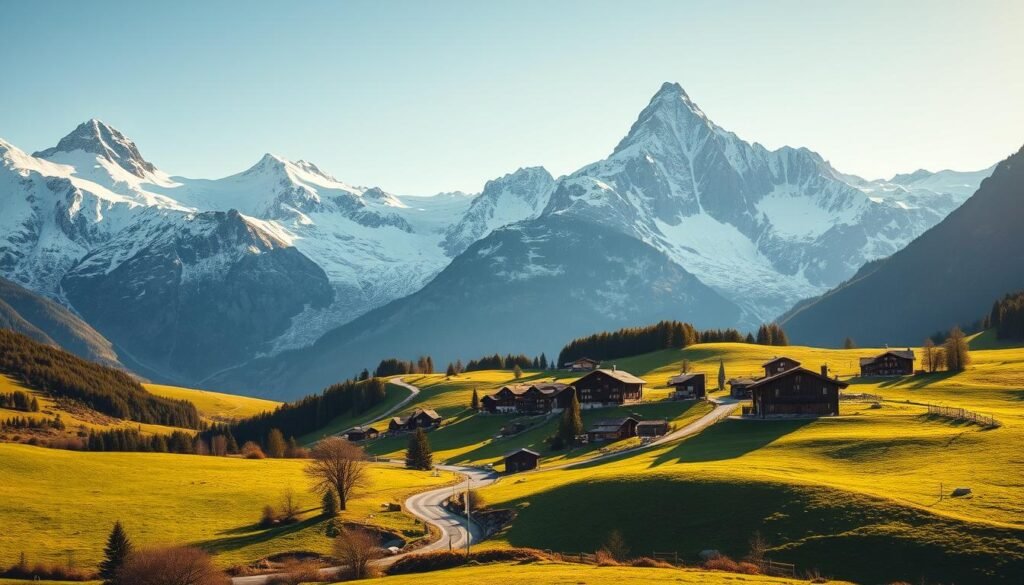Did you know roughly one third of travelers choose dates around summer festivals or winter sports when planning a trip here? That figure shows how much the season shapes your experience in this country.
I write from experience: picking dates changes everything. Mountains get snow while lakes warm, cities host jazz or Christmas markets, and rail runs year-round though some lifts pause in shoulder months.
I’ll compare what each season actually feels like on the ground so you can match your priorities—crowds, cost, or activities—with the weather and events that matter most.
Expect clear trade-offs: spring brings wildflowers and deals, summer opens trails and festivals, fall offers wine harvests and fewer crowds, and winter delivers reliable alpine snow and holiday charm.
Key Takeaways
- Seasons create big contrasts: lowland lakes and high alpine snow can overlap.
- Shoulder months often cut costs and still deliver great experiences.
- Plan around headline events if you want to join or avoid crowds.
- Some panoramic lifts close for maintenance after Easter and in late autumn.
- Long summer days boost outdoor activities; short winter days favor city museums.
How I Decide the Best Time for My Switzerland Trip
I pick dates by first mapping must-do experiences against likely weather and openings. That tells me whether I should aim for hiking in late spring, lakes in summer, harvest festivals in autumn, or ski resorts in winter.
- I match core activities — hiking, skiing, scenic trains, wine festivals, or markets — with the realistic windows for good weather and operating lifts.
- I check historical temperatures and forecasts; March often feels wintry, April swings, and late May usually stabilizes.
- I confirm cable car and panoramic train schedules so I don’t lose a Glacier Express or mountain viewpoint to maintenance.
Crowds, prices, and daylight hours at a glance
- Summer brings long days and busy hotspots; September eases crowds and costs.
- April and November often give bargains if I accept fewer alpine operations.
- I factor daylight: long summer days for big hikes; short winter days for rails, museums, and markets.
I split routes by altitude, pencil in rest days for crowded weekends, and keep flexible backups for weather or closures. This approach helps me travel smarter and enjoy the season I choose.
Switzerland by Season: What to Expect in Spring, Summer, Fall, and Winter
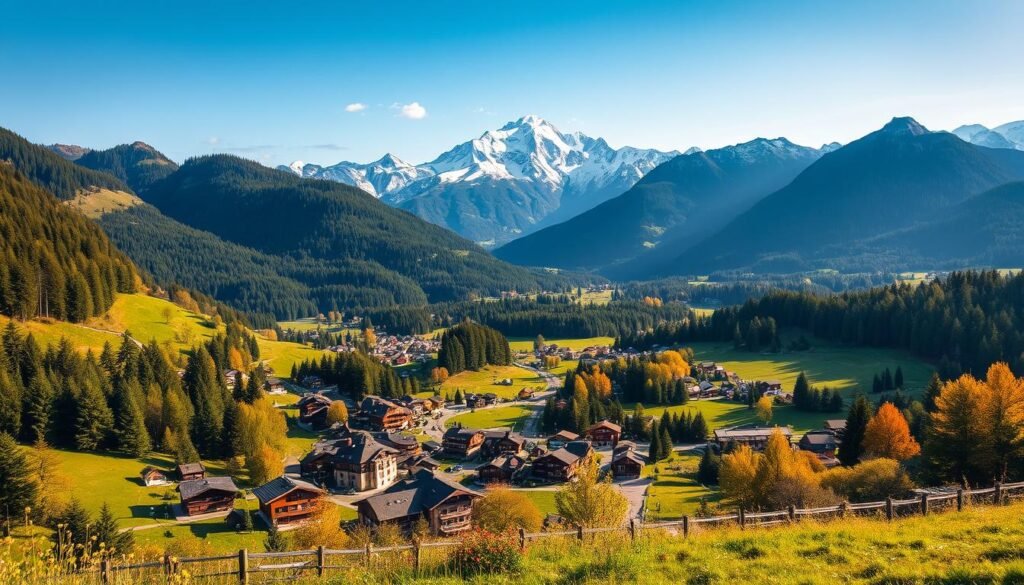
Each season in Switzerland rewrites the itinerary: festivals, snow, vineyards, and quiet lakes all compete for attention.
Spring (March–May): Wildflowers and changeable weather
Spring brings fewer tourists and better rates. March can still feel wintry (about 41°F/5°C), April is a mix of sun, rain, and occasional snow, and late May usually stabilizes.
Some cable cars and panoramic trains reopen in late May and June, so I watch schedules before booking mountain days.
Summer (June–August): Hiking, lakes, and big festivals
Warm weather (roughly 64–82°F depending on altitude) makes this prime for high trails and lake swimming.
I aim for early-morning or late-afternoon visits at Jungfraujoch or Titlis to dodge crowds and long queues.
Fall (September–November): Wine harvests and golden views
September feels like a quieter summer; October brings rain and vivid foliage; November cools and calms, perfect for museums and vine-side days in Lavaux.
Winter (December–February): Snow sports and festive markets
Set your base in Zermatt, St. Moritz, Davos, or the Jungfrau Region for reliable snow and skiing. Lowland temps hover near freezing, and cities sparkle with Christmas markets and special events.
- Across the year: I rely on rail to hop between lake warmth and alpine snow without driving stress.
- Always check lift and train maintenance calendars so mountain plans actually run when I get there.
Spring in Detail: Shoulder-Season Wins and Watch-outs
Shoulder-season travel in spring rewards flexibility: you can mix lake days and snowy summits if you plan smart.
Typical temperatures and daylight
March often feels wintry with highs near 43°F (6°C), frequent rain, and freezing nights. Daylight stretches after the last Sunday in March, so afternoons feel longer.
April is variable—wind, sun, rain, and occasional snow can all show up in a single day. By May, lowlands warm into the mid 50s–60s°F (15–19°C).
What’s open vs. closed
Check lift calendars: some cable cars and panoramic trains pause after Easter and restart in late May or June. Always verify dates before booking a scenic day.
Where I go and late skiing
My spring bases are Lake Lucerne, Interlaken/Lauterbrunnen, Bern, and early-warm Ticino (Lugano). I pick low-to-mid hiking trails as snow melts higher up.
If I want late skiing, I head for Zermatt and other high-alpine areas that often keep slopes open into April—and sometimes May.
- Packing tip: base layers, a waterproof shell, and grip-ready shoes handle wet trails and cobbles.
Summer Highlights: Trails, Lakes, and Iconic Swiss Experiences
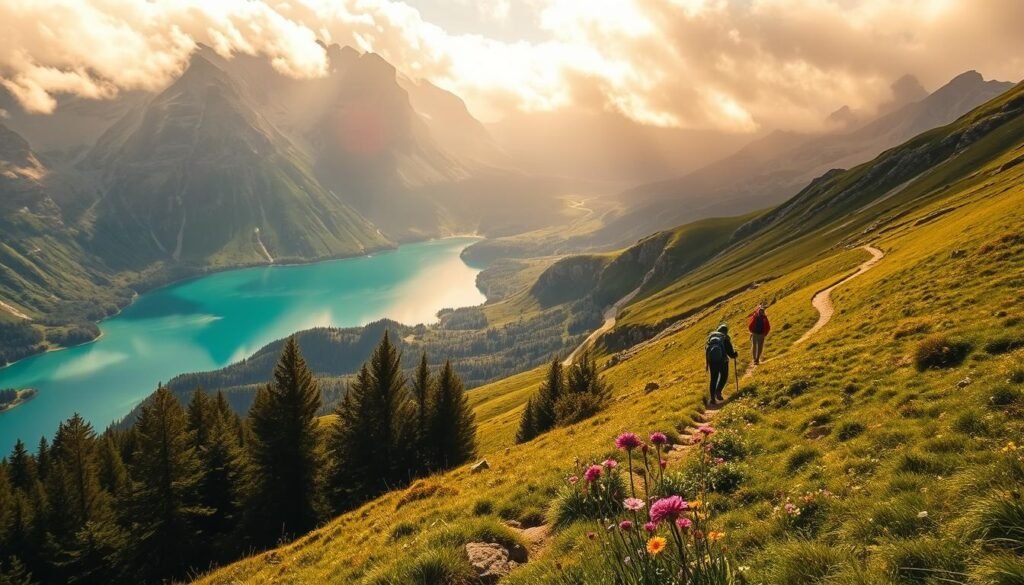
Summer in Switzerland opens long, sun-filled days that beg for high trails and lake swims. I use warm mornings for steep routes and save afternoons for water and town wandering.
Top hiking and panoramic spots
I anchor hikes in the Bernese Oberland for classic panoramas of Eiger, Mönch, and Jungfrau. I also favor the Engadin Valley around St. Moritz for quieter trails and larch-studded ridges with wide views.
On the water
Boat rides on Lake Lucerne, dips in Lake Geneva and Lake Zurich, and a float down the Aare make hot days much more pleasant. Lake Sils is my go-to for a calm swim away from crowds.
Festivals and national celebrations
I plan misses and hits around big events: the Montreux Jazz Festival in June–July and Swiss National Day on August 1 light up the calendar with concerts and fireworks.
Beating crowds and heat
To dodge lines, I take first departures for Jungfraujoch or late ascents, or choose lesser-known peaks like Niesen or Stockhorn. I book hotels with A/C for hot lowland days and ride the Glacier Express for air-conditioned, cinematic rail days.
Autumn Advantages: Fewer Crowds, Wine, and Golden Landscapes
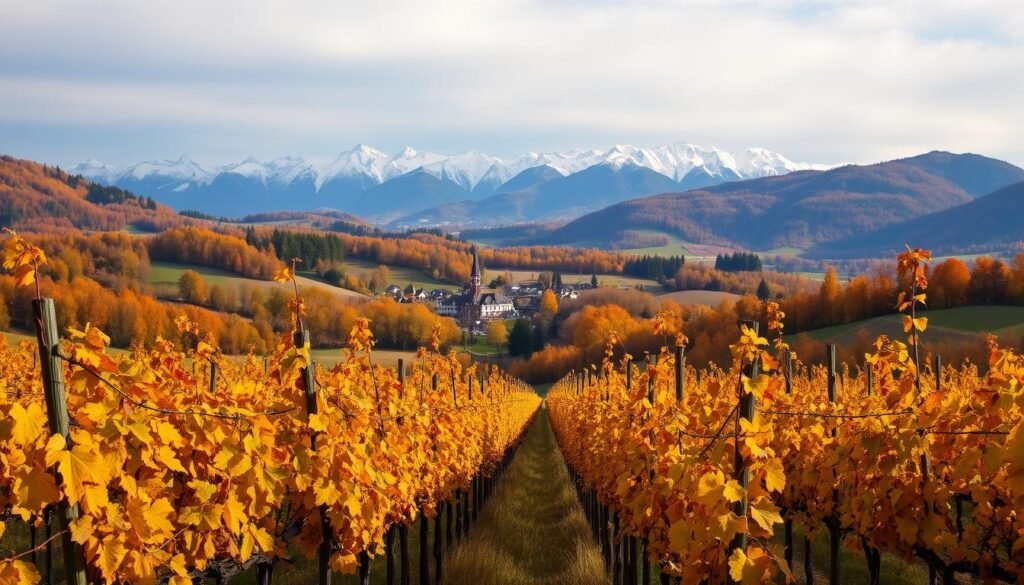
Autumn in this country feels like a soft exhale—crowds thin and vineyards glow. I use this season to slow down, sip local wine, and wander quiet lanes.
September gives mild days and shoulder-season value; it’s warm enough for mid-elevation hikes and perfect for terrace tastings in Lavaux.
Foliage and festivals
I time my vineyard days around the Lavaux terraces and the Grape Harvest Festival in Neuchâtel. The désalpe, mid-September to mid-October, brings cow parades like Saint-Cergue’s that blend music and mountain culture.
Weather shifts
September is pleasant, October offers brilliant foliage and more rain, and November turns chillier and wetter. High trails can see early snow and some lifts close for maintenance after late October.
My favorite routes
I build city-plus-vineyard loops: Geneva with Lavaux, Lausanne with Vevey, then add a mountain day for golden vistas. For November I flip to museums and cozy villages, enjoying lower prices and quieter restaurants.
“Autumn shows a gentler side of the country—richer colors, fuller glasses, and fewer crowds.”
Winter Wonderland: Ski Resorts, Christmas Markets, and Scenic Rails
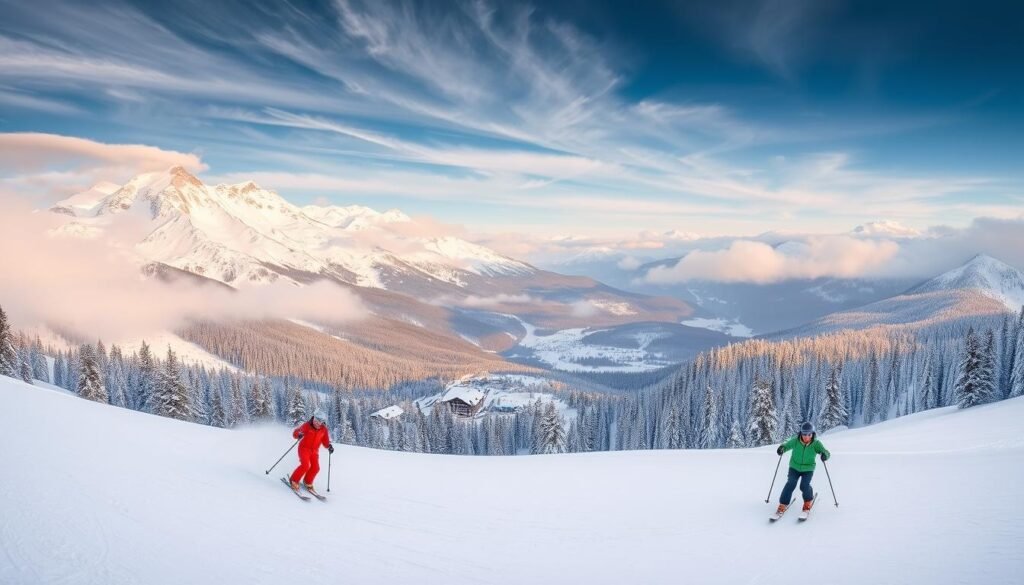
When cold snaps arrive, I switch plans for skis, markets, and long panoramic train rides. January brings the most reliable alpine snow and crisp lowland days near 28–39°F (-2–4°C).
Ski and snow hotspots
I base in high resorts when I want guaranteed coverage: Zermatt for Matterhorn views, St. Moritz for glam Engadin terrain, the Jungfrau Region for Eiger drama, and Davos for broad piste networks.
Festive city breaks
I thread December city stops through Zurich, Basel, Montreux, and Lausanne for Christmas markets, candle-dipping, raclette plates, and steaming glühwein. These markets run most of December and add real charm to short days.
Signature events
I plan trips around marquee events when I can: Snow Polo and White Turf in St. Moritz, the Lauberhorn World Cup above Wengen, and the Château-d’Oex hot air balloon festival for colorful winter skies.
Getting around, daylight, and packing
I rely on Swiss trains in winter. They are punctual, panoramic, and spare me the stress of driving on snow. Mountain prices rise in peak ski weeks, so I book lessons and lodging early.
- Front-load mountaintop days while daylight lasts and save spas, museums, and taverns for late afternoons.
- Pack insulated layers, a waterproof shell, warm boots with traction, and hand warmers; sidewalks can be slick even without deep snow.
- Mix skiing with sledging, snowshoeing, and spa time so everyone enjoys the season.
“Winter in the mountains feels cinematic — crisp mornings, short bright days, and roaring village life after sunset.”
The Best Time to Visit Switzerland: My Month-by-Month Take
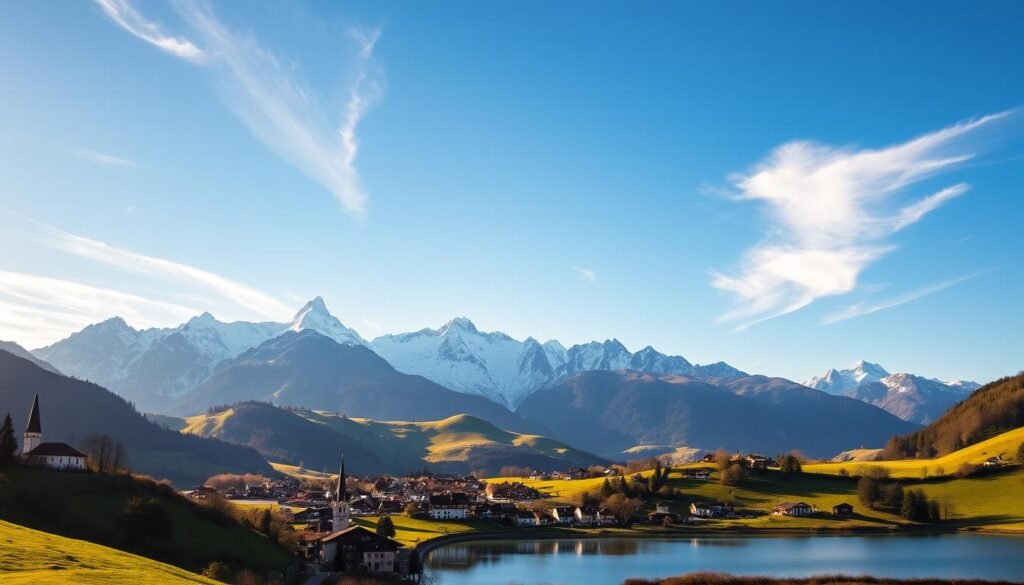
I sort months into three simple piles: lake days, city culture, and alpine snow. That helps me pick the right month for the trip I want without overthinking every forecast.
Best overall balance: late spring and early fall
Late May–mid-June and September are my go-tos. Trails are runnable, boats on Lake Lucerne often run, and crowds are smaller than peak summer.
Warmest months for lakes: July and August
July–August deliver the warmest temperatures and reliable lake swimming. I book early-morning hikes and A/C hotels for hot afternoons and busy festival weekends.
Cheapest windows: April and November
April brings big spring deals if I accept some closures. November is ideal for museums—use a Swiss Travel Pass and enjoy low hotel rates and calmer streets.
Best for snow and skiing: January and February
For dependable skiing I aim for January–February. I lock in lodging and lessons in Zermatt, St. Moritz, the Jungfrau Region, or Davos well ahead of peak weeks.
“Plan the Glacier Express for summer panoramas, but always double-check shoulder-season timetables.”
Conclusion
I follow one clear rule: choose the season that matches your energy, then shape logistics around it.
For lakes and long hikes, aim for summer or September for similar vibes with fewer crowds. If you crave powder, pick January–February and book early; December delivers twinkling markets and festive city life.
For savings, April and November reward flexibility if you plan around lift and panoramic rail maintenance. Late May–mid-June and September are my personal sweet spots for open lifts, fair prices, and calmer queues.
Use trains to glide between lakes and high alpine bases, build in weather-proof plans, and verify schedules before you lock dates. Use this guide to fine-tune your dates and map a trip that hits your musts. When you’re ready, I’ll help dial in the details for your visit switzerland and the ideal time visit on your calendar.


